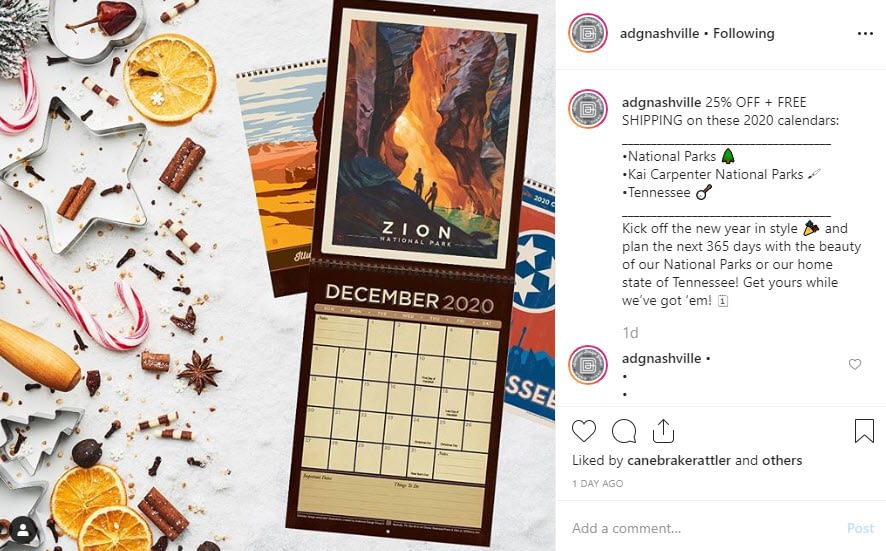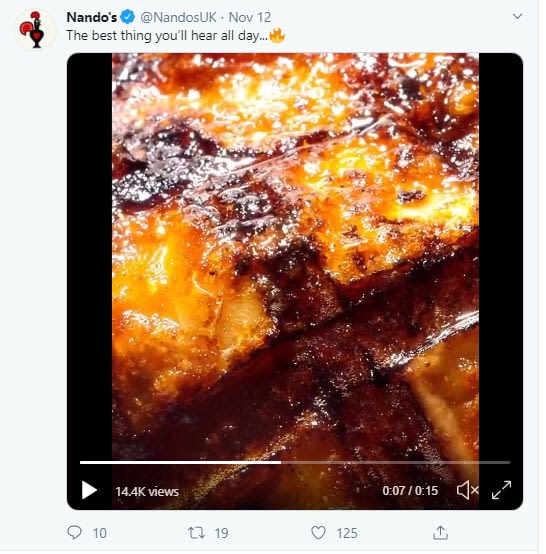Take a scroll through your Instagram or Facebook feed. Take note of some favorite brands you follow. What do they have in common? What elements of text and visual media do you notice happening over and over? What’s often most prevalent about big brands on social media is that they remain incredibly consistent, regardless of changes to the social media team. They do this by using a social media style guide.
A social media style guide ensures that a brand stays on track and is able to constantly think up new content without straying too far from their brand voice. If you plan on finding some success on social media, you need to develop a social media style guide.
And we’re here to show you how to do it.
Why do I really need a social media style guide?
Some folks love thinking of creative new ways to highlight their company on Instagram and Twitter. Others look at social media like it’s a wild frontier of no rules along with a deep pit of wasted time that rarely renders any results.
It doesn’t matter which boat you’re in because a style guide provides answers no matter what.
If you have a firm grasp on social media, a style guide helps with consistency.
If you cower away from social media, a style guide makes it seem far more manageable.
Here’s why a social media style guide is so important:
- It helps develop your brand and add personality to it.
- There’s less room for error when you have a guide to show you what to post.
- It’s easier to pass along information about social media when you get new employees.
- It speeds up your content creation and posting process, since you have a reference at all times.
- It makes your content memorable compared to those accounts that lack consistency and use random colors, tones, and media options.
- You have a lesser chance of messing up grammar, spelling, and other elements that could make your brand look less professional.
- It allows you to never forget important elements like hashtags and mentions.
- There’s a smaller chance of problems with formatting, like if you were to upload a video or image that gets stretched out of proportion.
- You’re able to avoid disgruntled customers or legal problems, since the guide covers areas like touchy content.
Now that you understand the importance of having a style guide for your company, the next step is to look at examples and put together your own social media style guide.
Essential parts of a social media style guide
You may argue that some of these elements are more important than others, but the key is to incorporate all of them into your style guide.
Here are the primary components we like to include in all social media style guides:
- Overall voice and tone
- Formatting posts
- Media formats
- Handling hashtags
- Handling emojis
- News and blog posts
- Proper spelling and grammar
- A breakdown for quick reference
1. Overall voice and tone
All brands take on personalities.
The personality often comes from the actual people posting articles, videos, and other types of media.
However, you can also establish a personality by defining what you would like your voice and tone to sound like in order to best reach your ideal customers.
Your company voice is what your brand personality sounds like, while the tone is the different ways in which your voice is used.
For instance, a company may typically have an upbeat and playful voice. The tone uses that voice, but it changes based on what you’re trying to accomplish. For instance, an advertisement’s tone may have a playful voice, but it’s in a salesman’s tone.
The goal is to find your voice and ensure that it blends with the types of products and services being sold.
Here are some examples to get you started:
Adventurous and playful
REI has a consistent voice that encourages people to get out and see the world. It repurposes user content and mainly focuses on people, or animals, doing fun things outside.


Star Wars also falls in this category most of the time, seeing as how many of its posts are meant to bring users back into that adventurous universe they all love.
The only variance is when Star Wars tends to bounce back and forth between playful and inspiring.


Laidback and funny
Dollar Shave Club made a name for itself for being upfront and casual.
That hasn’t changed, and that’s why it’s so easy to recognize a DSC post on social media.
A great example is bashing their own company after a product launch failure.


Informative and inviting
Lodge Cast Iron sells cooking equipment made from cast iron. So, it makes sense to post recipes for the outdoors. The voice tends to encourage family and friend bonding and creating experiences with other people, like when around the campfire.


Quirky and unexpected
Zappos has sent out free gifts in its packaging in the past, so it makes sense that the social media is similar in randomness and playfulness.


Creative and resourceful
Brown Elephant is a higher-end thrift store that takes many of its items and shows how people can repurpose them through social media.


Elegant, yet rugged
Oakstreet Bootmakers craft their footwear from scratch. The social voice lends itself to people who want to look amazing but also stay active.


Reliable and new
Verizon may not be the most exciting on social media, but that’s how some brands need to be. Most of its posts involve an innovative new technology or how you’ll never lose service.


2. Formatting posts
Your social media style guide should include a section for formatting. All social networks require slightly different formatting, so feel free to adjust this depending on what you use.
Here are the formatting guidelines we suggest, in general:
- Stick to sentence case across all networks.
- Get to the point with the first sentence.
- Keep text to one or two sentences.
- Consider bullets when possible.
- Break sentences into separate paragraphs.
- Place an emoji in as many posts as possible, unless your voice doesn’t call for it.
- Shorten all links.
- Keep room for hashtags and mentions, but don’t clutter the post with them.
- Add value with media.
The following example could be shortened, but it’s an excellent example of emoji use, broken up paragraphs, and getting to the point at the beginning.


3. Media formats
Media comes in all forms, and varying types of media are allowed across social networks.
Your style guide establishes what type of media is manageable and appropriate for your brand.
Decide the following:
- Is this media type useful for representing our voice and tone?
- Is this media manageable? (Does it take too long to make? Can we afford it?)
- Are we aware of the formatting guidelines for each media type on each network being used?
As for general media guidelines, consider the following:
- Pick a software that offers templates and design tools. Customize the same templates over and over.
- Include logos on media without going overboard.
- Make your talent as natural-looking and diverse as possible–for people in videos and photos. Avoid corny stock photos.
- Make a list of the social media platforms you plan on using and don’t stray from that.
- Always stick to the same fonts and colors.
- Consider user-generated content that conveys your message and voice.
Subway posts fun GIFs on Twitter quite a bit, so the following fits with the brand. You also see Subway colors inside the media.


4. Handling hashtags
Creating conversation and launching campaigns often rests on the usage of hashtags.
Hashtags are available on a wide range of social sites, but sometimes it’s easy to get away from your voice.
Here are some tips for your style guide:
- A hashtag should be relevant to the post.
- A hashtag should follow your brand’s voice and tone.
- Keep it to a maximum of two hashtags on Twitter; the ideal number of hashtags is one.
- Skip hashtags on Facebook since they don’t get much usage.
- Consider one or two hashtags in the body of your Instagram posts. More hashtags can be used in the comments to hide them.
- Keep it to five or six hashtags on Pinterest.
See how Imperfect Produce added only two relevant hashtags to its Instagram post. It then posted many more in the comments, keeping the actual post less cluttered.


5. Handling emojis
Emojis don’t always have to be part of your social strategy. But there’s no better way to inject a sense of vibrancy and personality into your posts.
In short, you should have a section in your social media style guide addressing emojis.
After all, a lawyer probably wouldn’t want emojis used on a regular basis, and some social marketing managers may go overboard sometimes.
Here are some hints for emojis:
- Make sure all emojis are relevant to the brand and post. You’re not looking for filler.
- Try to keep emojis at the end of each post. Sometimes they work inside the middle, but most of the time it causes a distraction from reading.
- There’s no need, or no option, for emojis on LinkedIn, Pinterest, and a few other networks you may use.
- Place Instagram emojis regularly in posts and replies.
- Use Facebook emojis less liberally. Stick to the end of posts.
- You can’t go wrong with too many emojis on tweets and Twitter replies, unless it’s not in line with your voice.
Nando’s Chicken has a funny habit of posting videos of its simmering food on Twitter. There are no zoom outs or special effects, just flowing gravies or simmering meats. The post below includes a simple emoji that tops off the tweet nicely.


6. News and blog posts
News from the outside world is tricky on social media. Unless you’re running a breaking news magazine, you probably want to avoid this type of content altogether. There’s nothing worse than sharing an article with misinformation, so it’s best to wait until all of the information is readily available before you post about news.
Having said that, include a part in your style guide telling social managers about news posts. On rare occasions, you can post news that’s entirely on-brand and heavily proofread.
Your own blog posts are a different story. For this, we have two rules for your style guide:
- Mainly stick to evergreen content that’s going to remain relevant in the coming years.
- Use a social media management tool for scheduling updates about blog posts on various platforms.
With the automated scheduling, you’re sharing your posts on the blog but you don’t have to spend any time formatting and publishing to social media.
7. Proper spelling and grammar
Spelling and grammar mistakes are common on social media. The only problem is that people still cringe when seeing it.
Don’t let your brand get a reputation for poor grammar or spelling just because this is a less formal medium than, say, a magazine article.
Spelling and grammar is a broad topic, but here are some areas to cover in your style guide:
- Encourage the use of an official style guide for your social media managers. Have them read the Chicago Manual of Style or the MLA Handbook at least once. They’ll never remember everything, but it helps.
- Stick to the Oxford comma to avoid any confusion.
- Avoid gendered terms like he and her, unless you’re marketing directly to a specific sex.
- Don’t substitute any words with emojis.
- Utilize a spelling and grammar checker like Grammarly.


8. A breakdown for quick reference
At some point, you might have someone new post on your social media.
In addition, it’s nice to have a quick outline of your style guide for your regular social managers.
That’s why no style guide is complete without a quick breakdown of the must-haves.
An example would be:
- Our company’s voice is fun, genuine, and informative.
- Make posts short and sweet, getting to the point with some fun included.
- Use emojis, hashtags, and media with intention.
- Never abbreviate or change words to make posts shorter.
- Avoid speaking in first-person.
- Keep videos to one minute.
This is merely a short look into what a quick reference guide might be for a smaller company. It all depends on what your brand is looking to achieve and how you can communicate that in a few bullet points.
Make your social media style guide before posting!
- Brand voice
- Post formatting
- Media formatting
- How to use hashtags
- How to handle emojis
- Sharing company news and blog posts
- Interacting with outside news
- Spelling and grammar rules (ie whether you use American English or British English)
- A quick breakdown so team members can see all of the rules at a glance
The post How to Build a Social Media Style Guide for Your Brand appeared first on Revive Social.